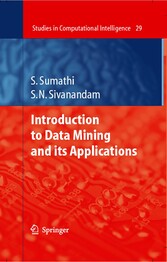Search and Find
Service
2 Data Warehousing, Data Mining, and OLAP (p. 21)
Objectives:
• This deals with the concept of data mining, need and opportunities, trends and challenges, data mining process, common and new applications of data mining, data warehousing, and OLAP concepts.
• It gives an introduction to data mining: what it is, why it is important, and how it can be used to provide increased understanding of critical relationships in rapidly expanding corporate data warehouse.
• Data mining and knowledge discovery are emerging as a new discipline with important applications in science, engineering, health care, education, and business.
• New disciplined approaches to data warehousing and mining are emerging as part of the vertical solutions approach.
• Extracting the information and knowledge in the form of new relationships, patterns, or clusters for decision making purposes.
• We briefly describe some success stories involving data mining and knowledge discovery.
• We describe five external trends that promise to have a fundamental impact on data mining.
• The research challenges are divided into five broad areas: A) improving the scalability of data mining algorithms, B) mining nonvector data, C) mining distributed data, D) improving the ease of use of the data mining systems and environments, and E) privacy and security issues for data mining.
• We present the concept of data mining and aim at providing an understanding of the overall process and tools involved: how the process turns out, what can be done with it, what are the main techniques behind it, and which are the operational aspects.
• OLAP servers logically organize data in multiple dimensions, which allows users to quickly and easily analyze complex data relationships.
• OLAP database servers support common analytical operations, including consolidation, drill-down, and slicing and dicing.
• OLAP servers are very eficient when storing and processing multidimensional data.
Abstract.
This deals with the concept of data mining, need and opportunities, trends and challenges, process, common and new applications, data warehousing, and OLAP concepts. Data mining is also a promising computational paradigm that enhances traditional approaches to discovery and increases the opportunities for breakthroughs in the understanding of complex physical and biological systems.
Researchers from many intellectual communities have much to contribute to this field. Data mining refers to the act of extracting patterns or models from data. The rate growth of disk storage and the gap between Moore’s law and storage law growth trends represent a very interesting pattern in the state of technology evolution. The ability to capture and store data has produced a phenomenon we call the data tombs or data stores that are effectively write-only.
"Data Mining" (DM) is a folkloric denomination of a complex activity, which aims at extracting synthesized and previously unknown information from large databases. It also denotes a multidisciplinary field of research and development of algorithms and software environments to support this activity in the context of real-life problems where often huge amounts of data are available for mining.
All prices incl. VAT













